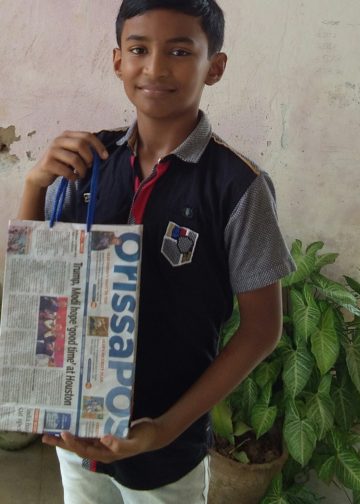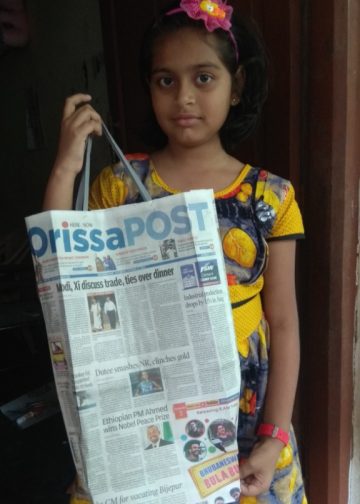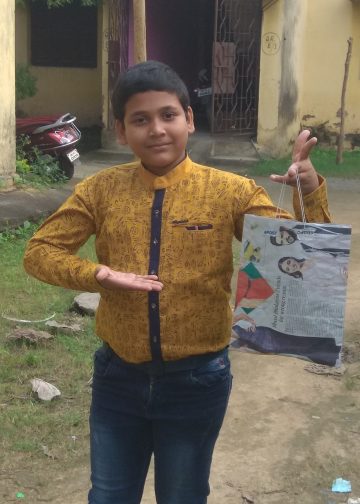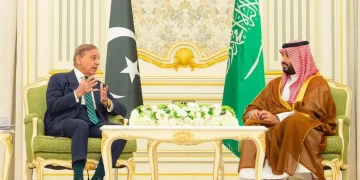FOCUS DIPLOMACY Dr Anil Singh
A tough task lies ahead for Prime Minister Modi to strike a balanced bargain with China
==
India is keen on having peace on the LOC and an end to intrusions. Other priorities, inter alia, include: laying a roadmap towards solving border issues, strong economic ties with China with greater Chinese investment in Indian infrastructure, and increased Chinese cooperation in ‘Make in India’ project, along with effecting a greater equilibrium in bilateral trade
TEXT
Prime Minister Narendra Modi is currently on a visit of China followed by Mongolia and South Korea. During his sojourn in China, Modi travels to Beijing, Shanghai and Xian and has already had a meeting with President Xi Jinping and some other senior Chinese leaders.
India and China, despite their proximity, are at odds with each other on several issues. Curiously, days prior to Modi’s visit, strong stands have been taken by both sides on some of the issues that have been irritants in bilateral ties. India registered a formal protest with the Chinese envoy in New Delhi against China’s 46billion dollar investment in an economic corridor intended to create a network of roads, railways and pipelines linking China’s west to the Arabian Sea through Pakistan-Occupied Kashmir. India’s concerns have been dismissed by the Chinese President, describing the economic corridor as nothing more than “a commercial project.” Meanwhile, in Beijing, the Chinese state media published a scathing assessment of PM Modi, accusing him of “playing little tricks over border disputes and security issues, and hoping to boost his domestic prestige while increasing his leverage in negotiations with China.”
Reports show differing stands of both India and China on bilateral issues. India, under Prime Minister Modi, is interested in the maintenance of peace and stability on the Line of Actual Control (LAC) and expects that Chinese incursions are stopped. Other priorities, inter alia, include: laying a roadmap towards solving border issues, strong economic ties with China with greater Chinese investment in Indian infrastructure, and increased Chinese cooperation in ‘Make in India’ project, along with effecting a greater equilibrium in bilateral trade.
China’s stance vis-à-vis India entails emphasis on a solution to the border issue, easing of norms for Chinese investment in India, seeking India’s involvement in China’s ‘Belt and Road’ vision for the New Silk Route and integrating India into new China-led global economic infrastructure, viz BRICS Bank, AIIB, and distancing distance New Delhi from forming a strategic anti-China alliance with the United States.
It has been opined: “Notions of LAC differ. Neither side is willing to show its cards easily, and selling a compromise to domestic constituencies remains difficult for each side. Beijing does not seem likely to give up its claim over Arunachal Pradesh, and no Indian government will find it easy to surrender the claim over all of Jammu & Kashmir.” Media reports citing Indian officials say China is not keen on the clarification of the LAC proposed by India in 2014 during the visit here of President Xi Jinping. The clarification of LAC ahead of the resolution of the boundary was expected to restrict aggressive patrolling from both sides. During her recent visit to Beijing, external affairs minister Sushma Swaraj called for an “out of the box” solution in order to not leave the issue for future generations to struggle with.
There are conflicting reports about the border dispute. China’s contention is that the border dispute is confined only to 2,000km mostly in Arunachal Pradesh whereas India asserts that the dispute covered the western side of the border spanning 4,000km, especially the Aksai Chin area annexed by China in 1962. Despite the prevailing differences on border issue, both countries have taken steps to improve the relations between the border troops with operationalization of hotlines both at the headquarter level and the commanders’ level. Both countries are reportedly eager to push forward the relations with focus on economic and trade issues.
Independent India’s relations with China commenced on a friendly note in the aftermath of establishment of diplomatic relations between the two countries in April 1950 and subsequent signing of an eight-year agreement on Tibet with Panchsheel as basis of bilateral relationship in April 1954. However, our grant of political asylum to the Tibetan spiritual leader Dalai Lama in 1959 by India led to a deterioration of relations with China and subsequent developments culminated in border clashes. Recurring incidents of border clashes led to the outbreak of the Sino-India war that began October 20, 1962 and ended with the declaration of unilateral ceasefire by China November 21, 1962. China occupied Aksai Chin area in the Indian territory of J&K and it is still in possession of that area. The LAC now divides areas under the two countries’ control.
Chill descended on the bilateral relations between India and China in the post-1962 period and a new beginning in bilateral relationship was made in the wake of the visit of the then Prime Minister Rajiv Gandhi to China in December 1988. A joint communiqué, issued after the visit, stressed on the need to restore friendly relations, agreed to broaden bilateral ties and work towards a “fair and reasonable settlement while seeking a mutually acceptable solution” to the border dispute.
Prime Minister Atal Bihari Vajpayee’s visit to China in June 2003 proved instrumental in bringing about a marked improvement in the post-1998 N-test freeze in relations. China’s recognition of Indian sovereignty over Sikkim also paved the way for an agreement on appointing special representatives (SRs) of both countries to negotiate boundary dispute. During the ten-year rule of the UPA, there have been exchange of high-level visits and the two sides have held bilateral discussions on commerce, trade, defence, military, and a wide range of other issues.
Over the years, trade relations between the two countries have thrived enormously. Both countries gave each other Most Favoured Nation status in 1984, and signed a double taxation avoidance agreement in 1994. Reports show that bilateral trade reached $18.7billion in 2005, and $72.4billion in 2014-15. India’s exports in 2014-15 were, however, of only $12billion and imports $60.4billion — a trade deficit to over $48billion.
India’s trade deficit with China stood at $44billion in the April2014-February 2015 period. Imports from China rose 18.18 per cent to $55.77billion and exports fell 18.88 per cent to $11.01billion during the period. Media reports show that India’s foreign trade policy 2015-2020 has warned that if the current situation persists, by 2016-17, merchandise imports from China will exceed $80billion while India’s exports will be around $20billion leaving ‘an unsustainable trade deficit of $60 billion.’
Some experts have drawn attention to the problems faced by Indian companies in dealing with China, which include inability to meet qualifying norms and certifications needed to bid for government projects and insistence on local entities in some provinces to avail of subsidies thus reducing competitiveness. It has been suggested that a four-pronged strategy should be adopted to deal with China. This would include leveraging India’s importance as a market for Chinese products; push for market access in key sectors, prioritising Chinese FDI in 18 identified sectors and establishing a sovereign deal to attract investment in infrastructure; and setting up an institutional committee to monitor the achievement of goals.
A tough task lies ahead for Prime Minister Modi to strike a balanced bargain with China, which is known as a hard bargainer. Speeches and grand theatrics are unlikely to cut much ice. Speeches need to be substituted by concrete deliverables. Some observers feel that while dealing with China, Modi will have to be not only cautious about what he speaks but will also have to be mindful that concrete deliverables flow out of his foreign tour, not just high-sounding rhetoric signifying nothing. The major challenge for Modi during his China visit will be the concrete follow-up on Xi’s promise of pouring in $20billion into India. Modi will have to do some plain talk and undertake the unpleasant task of a diplomatic audit with his Chinese interlocutors. This, however, is easier said than done.
No major breakthrough is expected during Modi’s current China visit and all the political problems in India’s bilateral ties with China are likely to remain unresolved because it is a Dragon’s drama of hard bargaining in which India, from a weak spot, may be unable to dictate its terms.
The writer is Executive Editor with Aaj Tak.






































